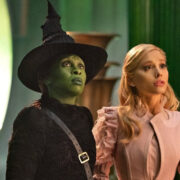Critiquing The Critic: The Evolution & Function Of Film Criticism
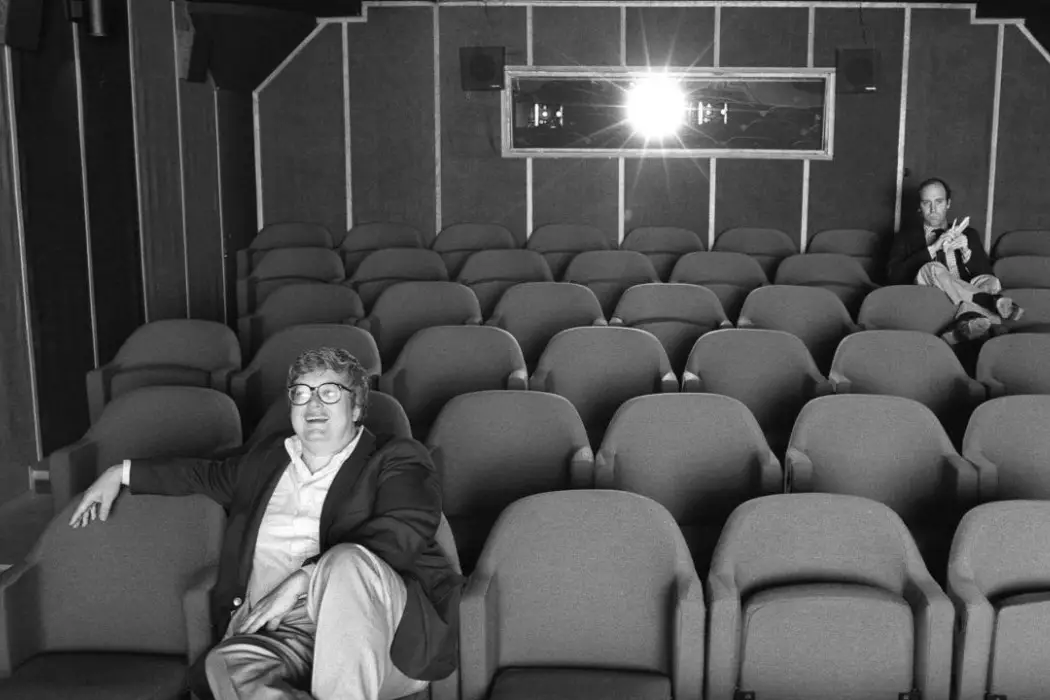
Matthew Roe is a director, writer, producer, film critic, theorist…
What is the point of film criticism? Why do we even need film critics? Why should they play a part at all in filmmaking, exhibition, or distribution? No one tells me what to like, so why should I heed these people?
The aforementioned questions have been a constant conversation in film communities for decades, especially with the increased dependence (and intensifying backlash) of film aggregate websites like Rotten Tomatoes and Metacritic. So, as filmmaking has vastly changed over the past century, we must ask ourselves, has film criticism matched this evolution or has it remained in stagnation? If it has or hasn’t, do we require these individuals in today’s cinematic conversation? Well, the short and long answers are multi-faceted messes of conflicting perspectives – just like film.
At its surface, analytical criticism is the assessment of the overall production quality and effectiveness of a form of work, with final conclusions theoretically determining the lifespan of that work. When this definition is applied to fields other than the arts, critics normally utilize objectivity, and real-world efficacy and application as the major facets of their analysis. Basically, determining how the work functions and serves the greater society in which it’s created. However, this is where the distinction occurs: traditional art (painting, drawing, sculpting), visual art (film, video, new media), performance art (theater, music, dance), and literature are all in the realm of subjectivity, in which you cannot use the same criteria to qualify or quantify.

The Birth of Film Criticism
What I often hear echoing throughout contemporary film communities is that critics are propagating a destructive idea that a film can and should be viewed in a specific way in order to determine its quality and significance. To a degree, this attitude will always be unavoidable, as there will always be work that is primarily judged on craft, and with everyone having an opinion on everything, there’s going to be unions and splits in consensus. However, there are so many schools of artistic thought in determining what can be defined as quality, that the dissimilarity between good and bad art is almost always amorphous. It would be more accurate to state that the two determinations are congealed together, rather than opposing ends of a spectrum.
Though critics of subjective art have existed for quite a long while before the advent of film, this medium was so new that the general awe about the worlds it opened up was far more potent than any need to critically interpret the work. That isn’t to say that fledgling film critics did not voice their opinion on the dawning industry, but the first instance of professional film criticism is a far cry from what is typical in industry trades today. As a matter of fact, true film criticism began in 1904 with the publication of The Optical Lantern and Cinematograph Journal.
This was the first trade publication of its type, making its way around the world. It provided, among many other details, interviews with industry leaders and crew, analysis on new innovations (technical and theoretical) which often included basic instruction manuals, debates on different equipment and film stock, and even letters to the editors which comprised inquiries from professional photographers and on-set electricians. It even featured satirical cartoons of the most classical stereotypes of filmmakers and filmgoers, which makes me believe that the earliest assumptions and romanticisations of the profession originated from this publication. But what also began in this paper was the very first critical responses to the actual films being released.

These reviews would inform the public on the number of new projects coming out from each major company, and would highlight standouts by describing a bare-bones plot – that was more or less it. When the journal ceased in 1905 after an eleven-month run, it became the biggest turning point in film criticism. In the subsequent vacuum, numerous publications would take up the motion picture mantle, though it only involved shoving mentions of titles or key individuals and news tidbits amongst the artistic critiques of vaudeville, theater, and music. While this may not initially seem important, the people now trumpeting film-related news were no longer industry professionals, but writers for the likes of Variety, The New York Clipper (which was later absorbed into Variety), Billboard, and other more minor entertainment papers.
Not only did cinematically-illiterate people now take on the role of film journalists, but their positions as traditional and performance critics changed the primary function of their position from reporting and prioritizing industry news to editorializing that information. Though this wouldn’t take complete hold as the standard until the following decade, it highly directed the evolution of the most influential trade publication of the early 20th Century: The Moving Picture World.
Welcome to Picture World
The evolved nature of film trades dramatically depicted the lightning-fast shifts taking place not only in the industry, but in how the audience received the work that industry produced. The brief period of time where film conversations were only held in previously unrelated publications was already coming to an end with the syndication of The Moving Picture World. While there were other trades releasing at roughly the same time, most of them were simply “house organs,” company-specific zines which listed and detailed their new releases for distributors. With its unique approach to the industry, The Moving Picture World would quickly become the largest circulated trade in existence, eventually absorbing or merging with its largest competitors. It would run in some form until 1973, ending as the QP Herald.
It was the brainchild of J.P. Chalmers, Jr., editor of the monthly amateur photography magazine Camera and Dark Room, and Alfred H. Saunders, editor of The Film Index (house organ for the Motion Picture Patents Company). They would describe their intentions in their first issue “to give the best, and only the best, news concerning the film industry, describing briefly each new film as it is produced, taking note of its quality, and giving an unbiased opinion of its merits or demerits.” Twelve thousand copies of their first issue were sold within a week. This resulted in the norm by which film would be discussed in the public discourse, a complex variation on The Optical Lantern and Cinematograph Journal and Variety – it was the first publication that was equal parts trade and editorial. Also, to clarify “unbiased opinion,” it was less on their personal feelings on any movie, and more about their existence as an independent entity, completely separate from the studios. Though that didn’t stop them from filling their pages of movie previews and ads paid for by those studios…
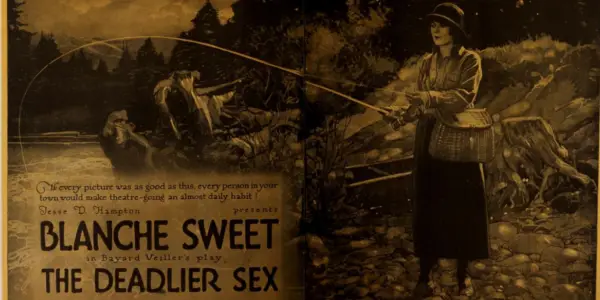
Focused primarily at industry professionals, theater owners, and exhibitors, articles were designed to be simple and frank, often used verbatim in publicity materials. The Moving Picture World also broke new ground by including personal information on key figures (marriages, deaths, etc), innovations in both technology and in storytelling, film debut details, and awards and honors – it was a veritable cornucopia of information that was finally all together. No longer did you have to collect multiple self-indulgent company-specific releases in order to get their slates of upcoming films and who starred in what. You could get everything, including celebrity details and serious conversations on the state and evolution of filmmaking, all in one place. The combined convenience and comprehension quickly made the trade the golden standard for how industry information was disseminated to professionals and fans alike (though it did not become more friendly and open to the mass public until a few years later).
Now take a moment and realize what’s happened here: the promotion, exhibition, and success of filmmaking had now shifted. The life of a film no longer was determined by numerous self-promotional house organs being translated into print ads. Not only was there another (verifiable) option to get a more accurate idea about these films and who made them, which paying audiences were highly appreciative, but it also jumpstarted modern scholastic conversations on filmmaking and cinematic storytelling on an international scale. The budding film critic community managed to create the first centralized system by which distributors would determine whether or not to run specific films, whether or not an audience would gravitate towards a movie, and push the medium’s scientific and artistic innovations and subculture as wordly significant. Modern film criticism and journalism had arrived.
The Backslide
However, with every innovation, there’s some fossil-esque thinking that holds back progress, and the film industry is no different. As filmmaking and film criticism began to evolve in a semi-symbiotic state, two major developments changed the direction of their relationship and their separate natures irreparably: an outside desire to control the material being produced, and the early monopoly of the studio system.
The filmmaking culture exploded between 1910-1930, with many of the industry’s biggest stars becoming the modern gods which connected nations across the globe (which can be hilariously seen in A Kiss from Mary Pickford, 1927). Due to the deep cultural impact movies now had on international cultures, the powers-that-be saw the new medium for what it was: a powerful tool of communication. With movies representing the American way of life to the rest of the world, many voices in Washington DC cried out for more oversight. It wasn’t until a quick succession of several salacious and brutal scandals rocking Hollywood that motions were made en masse to curtail the unchecked imaginations and apparent hedonism of the industry. While initially resistant to the rumors, gossip, and hearsay flooding the newspapers, soon industry trades began editorializing industry news, and film and personnel spotlights, rather than simply just delivering details. This was arguably done in order to keep up relevance with the mass public to maintain their sales in an increasingly overcrowded newsprint and zine world, but also not appear to be in overt alignment to the stances now being demonized nationwide by politicians and “moral majority” leaders.
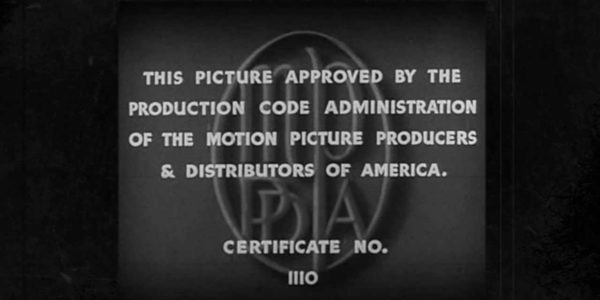
This struggle quickly compounded as the film industry grew massive and successful. The decade of battle between distributors and moviemakers was seemingly at an end, most major studios now owned their own theater chains, breaking the country into pre-agreed fiefdoms. This directly lead to the creation of the initial interstate censorship systems, where numerous state governments appointed their own boards of officials determining whether or not a film could be seen. With numerous complaints, protests, and outcries over several particularly controversial releases, and a growing movement in politics to suppress “undesirable” or “un-American” ideas in movies (ie communism, multiculturalism, homosexuality, resistance of authority, social disparity, ect.) the 1930 Motion Picture Production Code (aka The Hays Code), and eventually the Motion Picture Association of America, were created. This was the birth of critical toxicity – a stance asserting film criticism is not the promotion and discussion of movies and moviemaking for the betterment of the art, but the methodology by which authority figures restrict access to controversial material. Now movies are subjected to personal subjective bias before they even make it into the public discourse, judged not by its artistic nature, but by its societal value.
Because of the tight-knit conduct between the government, “moral majority,” censorship officials, and studio executives, their combined stranglehold on production and distribution lead to one of the most contentious and suppressive periods in artistic history. It is easy to see this as a time in which filmmakers were against the world, as so many works that would come out of this period were highly indictive of the current era. However, it is important not to forget the role of the established and upcoming critical communities in ensuring the legacy of crucially important films. Though many exist, one film in particular champions this phase, with its legacy changing dramatically with age: Alfred E. Green’s 1933 feature Baby Face.
Baby Face
Though receiving heaps of scorn and ridicule for its depiction of overtly sexually-suggestive material (which prompted a significant re-edit on the final cut), Baby Face has become a beacon of pre-Code moviemaking in America. Its study of Nietzschean philosophy (though this was substituted for other morality play in the censored recut) is strong throughout the work, prompting vastly different and engaging points of view that were widely considered taboo for the time, including a (then) significant stance on interracial relations between black and white Americans. The film’s social and cultural implications are still vastly relevant and starkly unforgiving, which reflects the ever-present growing social attitude of communal race relations, sexual freedom, and ethical divides, while also embracing the “everything is up for grabs” mentality in early motion pictures. This heavy combination of social and artistic experimentation in Baby Face is often credited with being one of the projects which directly lead to the heavy enforcement of the Hays Code in movies – it would become one of the defining moments in motion picture history.
Over the course of seven decades, the recut variation of the film remained the only one in circulation, with the opinions and biases of filmmakers, critics, and censors continuing to define its existence, until an unedited copy surfaced in 2004 by Michael Mashon, the Head of the Moving Image Section at the Library of Congress. Untouched by censors or picked apart by antiquated social norms, the uncut Baby Face was entered into the National Film Registry the following year as “culturally, historically, or aesthetically significant,” and has consistently been referenced by contemporary critics, filmmakers, and historians galore as one of the greatest films of the 20th Century (and ironically has a 100% score on Rotten Tomatoes).
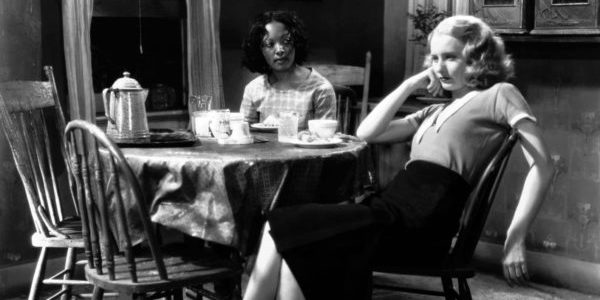
However, upon the release of the un-edited cut, a brand new discussion was brought to the forefront that hadn’t been present in the conversation surrounding the original release: the ambiguousness of the uncut ending, and the callous near-predatory nature of the protagonist Lily (played by Barbara Stanwyck). Often this argument is split between two separate fields of thought: that the role was a groundbreaking instance of individually-minded women in film, and that this portrayal is a demonization of women on screen, due in major part to the ruthlessly opportunist means by which Lily accomplishes her goals. This debate has validity on both sides, considering the extremes in which the character’s arc shifts, to where her interpretation of Nietzschean social ideas regarding exploitation has her mercilessly using anyone standing in her way. There isn’t a clean-cut way to observe the character, because she is equally both sides and neither – it is completely dependent on the person watching the movie, and that’s kind of the point.
This film isn’t abjectly saying one thing or another, which is what led the censor boards to reject it in the first place – a censor-approved release was only possible when generally-accepted morality was injected into the story, adding a catharsis about the “right path” in life. However, even upon the release of the theatrical cut all those years back, there were numerous film critics around the country that awarded the film enough acclaim to which it was considered a moderate financial success after its theatrical run. Even with heavy censorship, the conversation being held in newspapers and in trades kept the film alive, pushing the producers to create more works like it, and pushing more curious audiences to the box office.
New Shores, New Masses, New Waves
As the established critical community held fast in the swirling conflict between artists, studios, and censors, there were rising movements that constantly altered the ways in which films were approached and consumed. While Americans had film noir as a response to the Hays code, things were a bit less restrictive and thoroughly more complicated in countries abroad. Not only for filmmakers and producers, but for the international critical community; three separate trade magazines of rebellious young critics were about to change the world forever.
In Italy, after the fall of Mussolini’s fascist government, the country’s filmic center was lost. Many of the Italian creatives were struggling for a new cultural symbol for their tarnished country, and soon found it in the neorealist style. These films were often set amongst the disenfranchised and working poor on city streets, many of whom were not actors. However, this style wasn’t created in a vacuum – it was dreamed up as a counter to popular fanciful comedies, and to take advantage of the sudden availability of portable 16mm film cameras. Its revolutionary ideas were fostered, not by a collection of film scholars or masters of the craft, but by the rowdy cohort of film critics behind Cinema magazine — Luchino Visconti, Giuseppe De Santis, Cesare Zavattini, and Gianni Puccini — all of whom would soon become some of Italy’s most exploratory and poetic filmmakers. Their heavy focus on such unique realist perspectives and socialist ideals directly contributed to some Italy’s most iconic movies of the 1940s, including Ossessione (1943), Rome, Open City (1945), and Bicycle Thieves (1948).
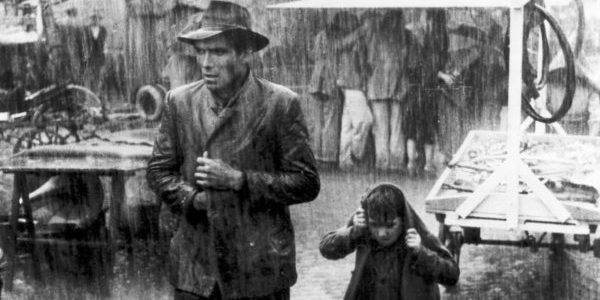
This movement swept across Europe like wildfire, yet died as quickly as a wet sparkler. By the time the 1950’s had rolled around, neorealism’s effects were shadowy ripples at best, but the boundaries stressed during the movement was enough to make some waves in France. Influenced also by the likes of Robert Bresson and Agnès Varda, two separate trades emerged in contrast to each other, both of whom remain in operation to this day: Cahiers du Cinéma and Positif. These two magazines have endlessly thrashed each other in their differences in theory and film appreciation, but the various theories in which both support and debate managed to alter the worldwide industry for decades, as the iconic Jacques Rivette, Bernard Chardère, Jean-Luc Godard, Gérard Gozlan, Claude Chabrol, Michel Mardore, and François Truffaut were writers between these papers, and began their assent into the New Wave pantheon as cinematic analysts, essayists, and critics.
These trades’ influence (if not direct responsibility) on neorealism, the French New Wave, the Left Bank, and several other minor movements, made their volatile discussions international. Not only were these trades far more individualistically editorialized, with greater focus on personal rhetoric rather than technical breakdowns and industry news, here marked the next significant shift in criticism’s relationship with filmmaking. No longer was criticism merely a tool for determining the theatrical life of a movie, for simply regurgitating information on the latest toys on the market, or for a celebration of key industry figures – now film criticism was an instrument for changing the art form itself. From inventing the auteur theory, to championing vast swaths of political radicalism in art and appreciation, these filmmakers and critics became heralds of new artistic perspectives that affected every market overseas, directly inspiring the New Hollywood and No Wave movements.
Criticism in the New Age
And though there are numerous instances which I can call upon for further evidence, we now we have the present day, where the advent of the internet and the democratization of the greater film discussion has arrived to muck up the established process. In a world where everyone’s opinion can be heard, what is even the point of published film criticism? Well, honestly, the same question has been asked about making film since the dawn of home videos – how in a world of such cheap democratized resources can anyone clearly determine who are the “legitimate” filmmakers? And like the tirade of words that I have subjected all of you till now, it is not an easy answer to reach, nor are there specifically any singular answers.
Film criticism has continued to play many roles over the course of the last century, even in a world where films can now almost be exclusively marketed to individual audiences. Its utility has gone from reporting on new developments to shaping the very understanding of the art form, while still managing to hold on to each of its incarnations along the way – it keeps what is useful and changes with the rest. While I cannot say every alteration to film criticism has necessarily been beneficial or detrimental, one major factor has remained steadfast with the medium till now: archiving. In efforts to research anything which requires me to dive into our history and discover the ins and outs of systems and works long antiquated or even lost, I often have to comb through copious amounts of documentative material. In order to fully understand the context in which cinema is released, how it ages, and is eventually understood, a full (as possible) history is absolutely essential – and the way I was able to do any of that is by reading the trade magazines and critical reviews of the day.
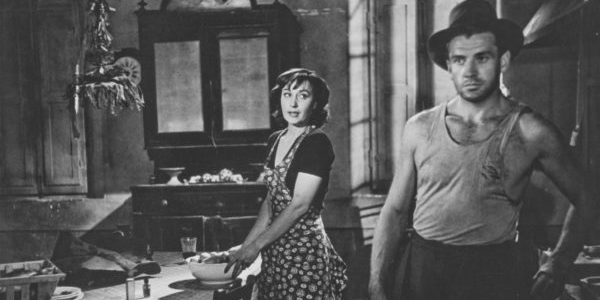
Resources written and published by famous filmmakers are absolutely important, but to understand the time, culture, social norms, and audience reaction of any film, we often look back to the critical response, and add to our appreciation or dismissal as the years trickle onward. So, as I wrap my long-winded answer to a close, I can confidently say that the functionality of film criticism is (and has always been) to springboard the public discourse surrounding a piece of work, and to archive that discourse for future generations. Critics are not the be-all-end-all words on a film, they are the debate-starters getting audiences involved in the discussion (like group mediators). In our attempts to do so, we manage to make a time capsule of not only our appreciation of film, but also our societal views and ethical intracisies, as personal biases always continue to play a part in editorialized opinions. As time progresses, not only do we often reevaluate our cinema, but also reevaluate our understanding of the time and place in which each film was made and shown – so we further understand where we’ve come, how we’ve gotten here, and where we might be going.
What role do you believe film criticism has in today’s cinematic world? Let us know in the comments!
Does content like this matter to you?
Become a Member and support film journalism. Unlock access to all of Film Inquiry`s great articles. Join a community of like-minded readers who are passionate about cinema - get access to our private members Network, give back to independent filmmakers, and more.
Matthew Roe is a director, writer, producer, film critic, theorist and historian, with over 12 years experience producing film, video, television, and online content. He currently writes DVD/Blu-ray reviews for Under the Radar Magazine, movie reviews for Film Threat, and contributes features to the Anime News Network. He has won two Vollie Television Awards, an Honorable Mention at the LA Movie Awards, and is a Cult Critic Award Finalist. Matthew is a member of the Political Film Society and the Large Association of Movie Blogs.











